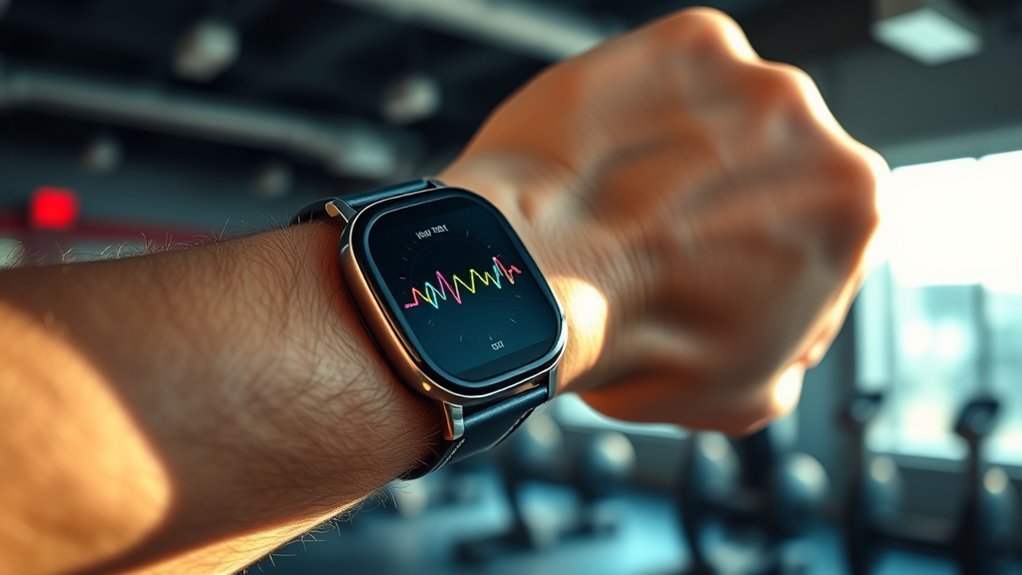Did you know that exercising within your target heart rate zone can increase your workout efficiency by up to 30%? Understanding heart rate guidelines is essential for maximizing those benefits while minimizing the risk of injury. By learning how to calculate and monitor your heart rate, you can tailor your workouts to meet your fitness goals. Let’s explore how to effectively navigate these guidelines for a safer, more productive exercise experience.
Understanding Heart Rate Zones
Understanding heart rate zones is essential for optimizing your workouts and achieving fitness goals. Heart rate zones represent different levels of exercise intensity, and knowing them helps you tailor your training.
You’ve got five main zones: resting, moderate, aerobic, anaerobic, and maximum. Each zone corresponds to a percentage of your maximum heart rate and offers unique benefits.
In the resting zone, your body recovers; the moderate zone builds endurance; the aerobic zone improves cardiovascular health; the anaerobic zone boosts speed and power; and the maximum zone pushes your limits.
Calculating Your Target Heart Rate
To make the most of your heart rate zones, you need to calculate your target heart rate. This number helps you train effectively within specific zones for maximum benefits. First, find your maximum heart rate by subtracting your age from 220. Then, determine your target heart rate by calculating 50-85% of that max value. Here’s a quick reference table:
| Age | Max Heart Rate | Target Heart Rate Zone (50-85%) |
|---|---|---|
| 20 | 200 | 100-170 |
| 30 | 190 | 95-162 |
| 40 | 180 | 90-153 |
Importance of Monitoring Heart Rate During Exercise
Monitoring your heart rate during exercise is crucial for optimizing your workouts and ensuring safety. By keeping track of your heart rate, you can gauge the intensity of your workouts and adjust accordingly. This helps you maintain an effective pace, preventing burnout or injury.
Additionally, monitoring your heart rate allows you to stay within your target zone, ensuring you’re reaping the maximum benefits from your routine. You’ll also become more attuned to your body’s signals, enabling you to recognize when you need to push harder or take a break.
Ultimately, this practice not only enhances your performance but also contributes to overall cardiovascular health, making it a critical part of any fitness regimen.
Tips for Safely Pushing Your Limits
While pushing your limits can lead to significant progress in your fitness journey, it’s essential to do so safely to avoid injury. Here are some tips to help you challenge yourself without overdoing it:
- Listen to Your Body: Pay attention to how you feel during and after workouts. If you’re overly fatigued or in pain, it’s time to rest.
- Gradually Increase Intensity: Don’t jump straight into high-intensity workouts. Increase your intensity or duration slowly, aiming for about 10% more each week.
- Stay Hydrated: Proper hydration supports performance and recovery, so drink water before, during, and after your workouts.
- Warm Up and Cool Down: Always incorporate warm-up and cool-down sessions to prepare your body for exercise and aid recovery afterward.
Tracking Progress and Making Adjustments
Tracking your progress is essential for achieving your fitness goals, especially as you push your limits. To start, keep a detailed log of your workouts, noting your heart rate, duration, and intensity. This information helps you see patterns and trends over time. Use fitness apps or wearable devices to make tracking easier and more accurate.
Regularly review your data to assess whether you’re meeting your targets. If you notice stagnation or fatigue, it might be time to adjust your training plan. Consider changing the intensity, duration, or type of exercise.
Listen to your body, and don’t hesitate to rest when needed. Remember, making informed adjustments keeps your workouts effective and enjoyable, ensuring you stay on track toward your goals.
Frequently Asked Questions
Can Heart Rate Vary Based on Age and Fitness Level?
Yes, your heart rate can vary based on age and fitness level. Generally, younger individuals and those who are more fit tend to have lower resting heart rates, reflecting their cardiovascular efficiency and overall health.
How Does Hydration Affect Heart Rate During Exercise?
Hydration greatly affects your heart rate during exercise. When you’re dehydrated, your heart works harder to pump blood, increasing your heart rate. Staying well-hydrated helps maintain ideal performance and keeps your heart functioning efficiently.
Are There Specific Heart Rate Monitors You Recommend?
For reliable heart rate monitoring, consider brands like Garmin, Polar, or Fitbit. These devices offer accurate readings, user-friendly interfaces, and various features to enhance your workouts. Choose one that fits your lifestyle and fitness goals.
What External Factors Influence Heart Rate Readings?
Your heart rate can dance to the tune of various external factors like stress, temperature, hydration, and even caffeine. Keeping these in mind helps you understand those numbers better and fine-tune your fitness journey.
How Can Stress Impact My Heart Rate During Workouts?
Stress can elevate your heart rate during workouts by triggering the release of adrenaline. When you’re stressed, your body prepares for action, which can lead to increased heart rate and affect your overall performance.
Conclusion
By understanding and monitoring your heart rate, you can transform your workouts into powerful tools for achieving your fitness goals. Staying within your target heart rate zone is like having a personal trainer in your pocket, guiding you toward maximum results while keeping you safe. Remember to track your progress and adjust your intensity as needed. With dedication and consistency, you’ll not only improve your fitness but also release a healthier, more vibrant version of yourself!
